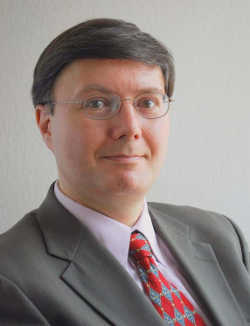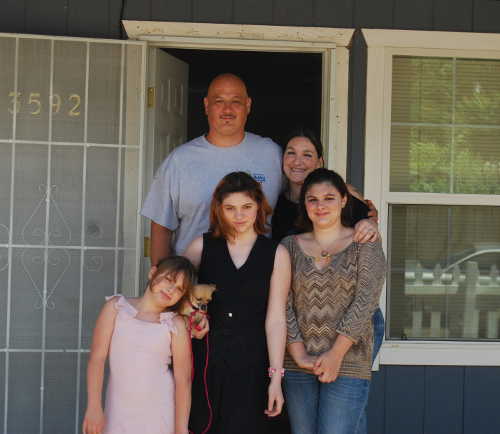LAKEPORT, Calif. – After numerous delays, the trial is under way for a Clearlake man charged with first-degree murder for a September 2013 shooting that left one man dead and wounded two others.
Joshua Robert Beavers, 28, is on trial for shooting 29-year-old David Ferrell to death at his home in Clearlake on Sept. 8, 2013, and for wounding Ferrell’s friends, Rachel Patterson and Paul Cressy.
Chief Deputy District Attorney Richard Hinchcliff, who is prosecuting the case, charged Beavers with murder; assault with a firearm on Ferrell, Patterson and Cressy; the attempted murder of Patterson and Cressy; discharge of a firearm in a grossly negligent manner; unlawfully carrying a loaded firearm on one’s person or in a vehicle; unlawfully possessing a short-barreled shotgun; and numerous special allegations for firearm use and inflicting great bodily injury.
Beavers pleaded not guilty to all of the charges in 2013.
On the day of the shooting, Beavers confronted a former friend, Cameron Fallis, at Ray’s Food Place over issues that arose between Fallis and his mother, Angel Esquivel, and her husband Orlando Esquivel Sr. Beavers had become a friend of the Esquivels, thought of them as parents and also dated their daughter.
The Esquivels said that confrontation occurred when they were on their way to Walmart. When they returned to their home Beavers retrieved two weapons that belonged to the couple, a .22-caliber semiautomatic Ruger handgun and a sawed-off .410-caliber shotgun. Beavers then got the Esquivels to drive him in their van – along with Brenden Alicea and Daniel Cunningham – to Ferrell’s home at 19th and Gardner, where Fallis was staying.
Parking on a nearby street, Beavers, Orlando Esquivel Sr., Alicea and Cunningham walked down to Ferrell’s home, finding him outside with Fallis nearby. Witnesses testified that Ferrell – a friendly man who wasn’t being confrontational – was unarmed, shirtless and wearing a pair of shorts.
After a brief exchange, Beavers is said to have pulled the handgun from his waistband, shooting Ferrell at point-blank range in the face. A single bullet struck him in the corner of his eye, killing him instantly.
Beavers and the men with him then fled, with Beavers reportedly firing two to three more shots, striking Cressy in the elbow and Patterson in the side.
When they got to the van where Angel Esquivel was waiting, the men piled in and directed her to drive off. She drove a short distance before several of the men got out of the vehicle and Orlando Esquivel buried the handgun. He later led police to the gun’s location.
Clearlake Police officers would track the group to the Esquivels’ home on 21st Avenue a short time later, taking them into custody.
Alicea and the Esquivels eventually were sentenced for acting as accessories. The Esquivels each received a year and Alicea 280 days, which they served in the Lake County Jail.
Cunningham – who also goes by the last name of Miller – evaded arrest until December 2013. In March 2014 he pleaded guilty to being a felon in possession of a firearm and was sentenced to six years in state prison.
Testimony in the case finally began on June 7, after a series of delays that ranged from Judge Andrew Blum being unavailable due to illness to issues with contaminated water at the courthouse as the result of a water main leak.
Then there was the matter of witnesses – in particular, Cressy and Alicea – reluctant to continuing to cooperate due to the time that has passed since the case began.
In a brief discussion held out of the jury’s presence at the end of the first day of testimony on June 7, Cressy objected to having to return, saying he “had a life.” Blum told Cressy he could expect to spend part of that life in custody if he continued to defy court orders and refuse to cooperate.
Hinchcliff acknowledged that it’s an old case and that Cressy had been cooperative for the first two and a half years.
Then on Thursday, District Attorney’s Office investigators tracked down Alicea, who they said had defied a subpoena and not reported to court to testify, and brought him from Clearlake to court in Lakeport in wrist and ankle cuffs.
Due to concerns he would leave the county and return to the Stockton area where he now lives without testifying, Blum ordered Alicea be kept in jail until he is due to return to court next week.
Beavers is represented by lead counsel Edward Savin and co-counsel, Andrea Sullivan, who is a partner in Lake Indigent Defense, the new organization heading up the county’s public defender contract.
Sullivan told Lake County News on Friday that it’s been decided that Beavers will take the stand and testify in his defense. While she said that could change later in the proceedings, at this point it’s anticipated to go forward.
Initial time estimates have the trial – which runs Wednesdays through Fridays – continuing through the end of July.
The testimony so far
In brief opening arguments, Hinchcliff laid out the sequence of the crime and the complex web of those who were involved.
In her opening, Sullivan said that the shooting didn’t come out of the blue, that it was the product of family issues that went back nearly 20 years combined with the involvement of the principal figures in growing and selling marijuana.
“There will be evidence that the marijuana business in Lake County can be violent,” she said.
First to take the stand in the trial on June 7 was Fallis, who the prosecution argues was the intended target of the shooting.
Fallis said he met Beavers when they were both boys and being cared for in a group home. Beavers later would meet Fallis’ mother at another group home in Ukiah where she worked and he was staying.
Both young men would gravitate to the Clearlake area when they reached their majority and left their group homes. According to testimony both would end up working in various capacities – Fallis as a seller and grower, and Beavers as a grower, overseer and “jack of all trades” – in the area’s illicit marijuana trade.
Fallis – who spent most of his childhood out of his mother’s custody – said he remembered his mother and stepfather growing marijuana from the time he was a small child.
The relationship between Fallis and his mother was troubled, and he was at various times homeless. He became friends with Ferrell, who allowed him to stay in a trailer on his property. Fallis said he sold marijuana, tended a nearby marijuana garden and also panhandled at Walmart in order to help bring money to the Ferrell family.
“David Ferrell was my best friend but I called him my brother,” Fallis said.
He recalled being assaulted by Beavers at Ray’s Food Place on the morning of the shooting. Fallis said Beavers told him he wasn’t working for the right people – in reference to selling marijuana for someone other than his parents – and Fallis had to give them an ounce of marijuana he had in his backpack. Evidence presented at court included surveillance video of the assault.
Fallis went back to Ferrell’s property, where a birthday party was supposed to take place later that day for Patterson and one of Ferrell’s daughters. He said Beavers and the others arrived, and Ferrell had told him he needed to fight Beavers – without weapons.
Fallis – who insisted that neither he nor Ferrell had any weapons during the confrontation – said Beavers reached up under his shirt and then extended his arm toward Ferrell, holding the handgun. At that point, Fallis said he was shoved from behind and then he heard the crack of the .22-caliber pistol.
“I remember David dropping in front of me,” Fallis said, crying and clutching his head with both hands. “I heard the sound of gurgling when David hit the ground.”
This week Cunningham, the Esquivels, Patterson and a doctor all took the stand.
Cunningham was returned from state prison, where he continues to serve his sentence, in order to testify. When he appeared on Wednesday in a green and white jumpsuit, he also had a blackened right eye, the result of an assault the previous week by assailants at the jail who called him a snitch.
Hinchcliff would attempt to introduce that assault into testimony before the jury in an effort to rehabilitate the credibility of Cunningham, a longtime friend of Beavers who originally had told police that Ferrell had a weapon but has since stated that Ferrell was unarmed.
Hinchcliff said the assault underscored the danger faced by Cunningham – who works as an inmate firefighter with Cal Fire – in testifying. However, Blum agreed with the defense objections that the testimony could be highly prejudicial to Beavers’ case and lead jurors to believe that Beavers – also in custody at the jail – had something to do with the assault.
Cunningham testified to witnessing Beavers assault Fallis on the morning of the shooting, and then going back to the Esquivels’ home where Beavers handed him the .410 shotgun.
Having previous felony burglary and stolen vehicle convictions, Cunningham said it was his mistake to agree to take the weapon, believing that he would have violated a “brother’s code” had he refused.
Cunningham now maintains that he saw no weapons during the confrontation other than the one handled by Beavers, who he didn’t want to get off on self-defense based on his past statements.
He said the shooting happened suddenly. “I literally heard my own heartbeat at that point,” Cunningham said, noting he “zoned out” afterward. “That shot kind of canceled everything out.”
After the shooting, Beavers shaved off his long hair to help change his appearance, Cunningham said. He said Beavers appeared to be anything but remorseful or regretful afterward, calling Ferrell a “fool.”
During cross-examination Cunningham also would testify that he had been involved in helping Beavers in the marijuana trade, and that Fallis and the Esquivels also were in the marijuana business.
During the course of the Esquivels’ testimony, it was revealed that Angel Esquivel owned the gun Beavers used to kill Ferrell. She had bought both the handgun and shotgun a week apart, from different individuals, about a month before the shooting, trading Norco, a prescription painkiller, for the handgun.
While Angel Esquivel said she couldn’t identify the handgun presented to her in court as hers, her husband confirmed that it was her gun.
They both also discussed their personal issues with Fallis, who Orlando Esquivel said had often stolen items from them so he could quickly sell them. He said that, days before the shooting, Fallis had stolen three of his eight surveillance cameras.
Orlando Esquivel said Beavers – who had started calling him “Pops” a few days before Ferrell’s shooting” – wanted to confront Fallis and “slap him up” over the family issues that had developed.
Asked why he didn’t stop the confrontation that turned fatal, Orlando Esquivel said of his stepson, “I wanted to watch Cameron get beat up, to be honest.”
Also testifying on Friday was Dr. David Racker, a diagnostic and intervention radiologist who reviewed the x-rays of Cressy’s damaged elbow.
His brief testimony was followed by that of Cressy, who said he had known Ferrell for about a year before the shooting occurred. Cressy was at the Ferrell home that afternoon, ahead of the birthday party, when he heard loud voices and a gunshot.
“I went around the corner and he was down,” Cressy said of Ferrell, who he tried to help by applying pressure to his wound. He said Ferrell stopped breathing within 30 seconds of him arriving at his side.
While he was sitting on the ground trying to help Ferrell, Cressy said he heard at least two more gunshots, and was struck in the elbow by a bullet. He subsequently was flown to Santa Rosa Memorial Hospital for treatment.
During her turn on the stand, Patterson said she had never known Ferrell to have a gun, and that Ferrell listened to Fallis about his assault by Beavers and tried to calm him down.
She said she was inside Ferrell’s home with his wife and children when she saw him, through the window, talking with individuals who came to the property. Then she heard a gunshot and yelling.
Another man blocked the front door to try to keep her from going out, but she said she jumped through a window to go out to help Ferrell, who she found on the ground, not breathing.
While she was outside she was struck by a bullet in the side. She said she looked up the driveway and saw the face of the man with the gun in his hand, pointed in her direction. At that time she had never seen him before.
A juror submitted a written question about whether Patterson saw the shooter in the courtroom. She said yes, referring to Beavers.
She also was asked by a juror if she had identified Beavers during an in-field lineup. At that time, he had shaved off his hair, and Patterson said she had told police that he looked familiar.
Testimony in the case will resume on Wednesday, June 21.
Email Elizabeth Larson at This email address is being protected from spambots. You need JavaScript enabled to view it. . Follow her on Twitter, @ERLarson, or Lake County News, @LakeCoNews.



 How to resolve AdBlock issue?
How to resolve AdBlock issue? 
























